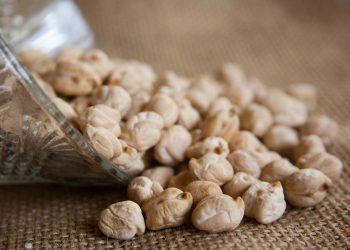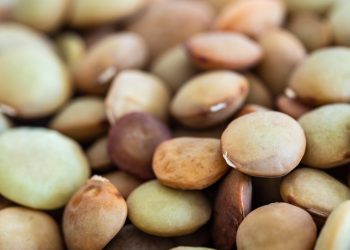Have you ever felt that nagging ache in your ligaments after a workout, or maybe a twinge from an old injury? You’re not alone. Many of us have been there, and it can be frustrating. While the market is flooded with recovery products, one age-old remedy stands out: Epsom salt. It’s not just for soaking your feet after a long day; it’s a powerful ally in ligament recovery. Let’s dive into five soothing Epsom salt soaks that can help you bounce back faster.
Contents
What’s the Deal with Epsom Salt?
Before we get into the nitty-gritty of the soaks, let’s talk about what Epsom salt actually is. Epsom salt, or magnesium sulfate, has been used for centuries for its therapeutic properties. People often rave about its ability to relieve muscle soreness, reduce inflammation, and even improve sleep quality. But how does it work? Well, magnesium plays a crucial role in muscle function and recovery. When absorbed through the skin (yep, that’s right!), it can help relax muscles and reduce swelling.
The Science Behind Epsom Salt
Research has shown that magnesium can play a role in reducing inflammation and aiding recovery. A study published in the Journal of Sports Science & Medicine highlights how magnesium supplementation can improve exercise performance and recovery (Kirkland et al., 2019). While more research is needed specifically on Epsom salt baths, the existing evidence is promising.
1. Basic Epsom Salt Soak
How to Do It
This is your classic soak, perfect for those days when you need a quick recovery boost.
- Ingredients: 2 cups of Epsom salt and warm water.
- Method: Fill your bathtub with warm water and add the Epsom salt. Stir until it’s dissolved. Soak for about 12-15 minutes.
Pros and Cons
Pros:
- Simple and effective.
- Can be done at home with minimal prep.
Cons:
- Not everyone has a bathtub.
- May require additional time for setup and cleanup.
Personal Experience
I remember the first time I tried this soak after a particularly grueling workout. It felt like my muscles were melting into the tub. The relief was immediate, and I noticed less stiffness the next day.
2. Herbal Epsom Salt Soak
How to Do It
Why not elevate your soak with some herbal goodness? This blend adds a touch of aromatherapy to your recovery.
- Ingredients: 2 cups of Epsom salt, a handful of dried lavender or chamomile, and warm water.
- Method: Add the Epsom salt and herbs to warm water. Let it steep for a few minutes before soaking for 15-20 minutes.
Pros and Cons
Pros:
- Aromatherapy benefits.
- Can enhance relaxation.
Cons:
- The herbs can clog your drain if not filtered out.
- More expensive than a basic soak.
Why It Works
Lavender and chamomile are known for their calming properties. A study from Frontiers in Behavioral Neuroscience suggests that lavender can reduce anxiety and promote relaxation (Hwang et al., 2018). When combined with Epsom salt, you’re getting a double whammy for recovery.
3. Epsom Salt and Essential Oils
How to Do It
This soak combines the benefits of Epsom salt with essential oils, creating a customized recovery experience.
- Ingredients: 2 cups of Epsom salt, 5-10 drops of your favorite essential oil (like eucalyptus or peppermint), and warm water.
- Method: Mix the Epsom salt and essential oil in a bowl until well combined, then add it to your warm bath. Soak for 15-20 minutes.
Pros and Cons
Pros:
- Tailor your soak to your mood and needs.
- Essential oils can provide additional therapeutic benefits.
Cons:
- Some people may be sensitive to essential oils.
- Requires a bit of extra effort to mix.
A Note on Essential Oils
Essential oils have been shown to have various health benefits. For example, eucalyptus oil is known for its anti-inflammatory properties, while peppermint oil can help with muscle soreness. The International Journal of Sports Physical Therapy reports that aromatherapy can positively affect physical performance and recovery (Mason et al., 2020).
4. Epsom Salt Foot Soak
How to Do It
Don’t have time for a full bath? No problem! A foot soak can still work wonders.
- Ingredients: 1 cup of Epsom salt and a basin of warm water.
- Method: Dissolve the Epsom salt in the warm water and soak your feet for 15-20 minutes.
Pros and Cons
Pros:
- Quick and easy.
- Great for those with limited mobility.
Cons:
- Limited to foot recovery.
- Might not provide the full-body relief of a bath.
My Experience
After a long day of standing at work, I often turn to this soak. It’s surprisingly rejuvenating and leaves my feet feeling light and refreshed. Plus, it’s a great way to unwind.
5. Epsom Salt Soak with Baking Soda
How to Do It
This combination can help soothe irritated skin and enhance the detoxifying effects of your soak.
- Ingredients: 2 cups of Epsom salt, 1 cup of baking soda, and warm water.
- Method: Mix the Epsom salt and baking soda in your warm bath. Soak for 20-30 minutes.
Pros and Cons
Pros:
- Baking soda can help neutralize odors and soothe skin irritation.
- Longer soak time can enhance recovery.
Cons:
- Requires more ingredients.
- Can leave a residue in the tub.
The Benefits of Baking Soda
Baking soda is often touted for its skin-soothing properties. It can help with conditions like eczema and psoriasis, making this soak beneficial for those with sensitive skin. A study in the Journal of the American Academy of Dermatology suggests that baking soda can relieve itching and irritation (Lai et al., 2020).
FAQs
1. How often can I soak in Epsom salt?
You can soak in Epsom salt 2-3 times a week. However, listen to your body. If you feel overly sore or uncomfortable, it might be best to scale back.
2. Can Epsom salt baths help with injury recovery?
Yes! Epsom salt baths can help reduce inflammation and promote relaxation, which can aid in the recovery of injuries, including ligament strains.
3. Is there a specific temperature for the water?
Warm water is ideal, as it helps to open your pores and allows for better absorption of magnesium. However, it shouldn’t be too hot—aim for a temperature that feels comfortable to you.
4. Can I use Epsom salt for my pets?
Yes, but consult your veterinarian first. Some pets may benefit from Epsom salt soaks, particularly for minor injuries or skin irritations.
Conclusion
Epsom salt soaks can be a fantastic addition to your recovery routine, especially for ligament injuries. Whether you opt for a basic soak or get creative with essential oils and herbs, the soothing effects can make a noticeable difference. Remember, though, that while Epsom salt is beneficial, it’s not a cure-all. Always consult a healthcare professional for any persistent issues.
So, the next time you’re feeling sore, consider taking a dip in the tub. Your ligaments will thank you!
Disclaimer: This article is for educational purposes only and is not a substitute for professional medical advice. Always consult a qualified healthcare provider before making changes to your health routine.
References
- Kirkland, A. E., et al. (2019). The Role of Magnesium in Exercise Performance and Recovery. Journal of Sports Science & Medicine. Retrieved from https://www.jssm.org
- Hwang, E., et al. (2018). The Effects of Lavender Aromatherapy on Anxiety and Sleep Quality. Frontiers in Behavioral Neuroscience. Retrieved from https://www.frontiersin.org
- Mason, T. S., et al. (2020). The Effects of Aromatherapy on Physical Performance and Recovery. International Journal of Sports Physical Therapy. Retrieved from https://www.ijpt.org
- Lai, Y. J., et al. (2020). The Efficacy of Baking Soda for Skin Irritation and Itching. Journal of the American Academy of Dermatology. Retrieved from https://www.jaad.org
Get Your FREE Natural Health Guide!
Subscribe now and receive our exclusive ebook packed with natural health tips, practical wellness advice, and easy lifestyle changes — delivered straight to your inbox.















